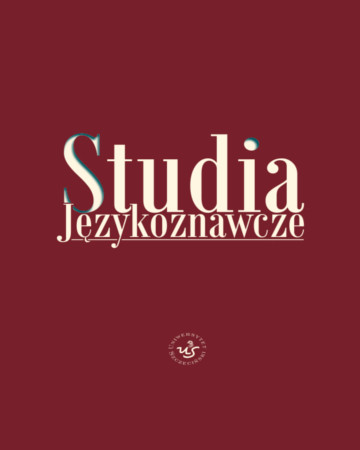





| Authors: |
Izabela
Kępka
Uniwersytet Gdański, Wydział Filologiczny, Gdańsk |
| Keywords: | language of Jacek Kaczmarski’s poetry valuation linguistic creation |
| Data publikacji całości: | 2017 |
| Page range: | 14 (135-148) |
| 1. | Bartmiński, Jerzy. „Punkt widzenia, perspektywa, językowy obraz świata”. W: Językowy obraz świata, red. Jerzy Bartmiński. Lublin: Wydawnictwo UMCS, 1990, 65–84. |
| 2. | Gajda, Krzysztof. Jacek Kaczmarski w świecie tekstów. Nowe wydanie, poprawione i poszerzone. Poznań: Wydawnictwo Poznańskie, 2013. |
| 3. | Gajda, Krzysztof. „Próba całości, czyli o problemach z porządkowaniem”. W: Jacek Kaczmarski, Antologia poezji, red. Krzysztof Nowak. Warszawa: Demart, 2012, 5–17. |
| 4. | Grzegorczykowa, Renata. „Pojęcie językowego obrazu świata”. W: Językowy obraz świata, red. Jerzy Bartmiński. Lublin: Wydawnictwo UMCS, 1990, 41–50. |
| 5. | Kaczmarski, Jacek. Antologia poezji, red. Krzysztof Nowak. Warszawa: Demart, 2012. |
| 6. | Kolberová, Urszula. „Wyzwiska z komponentem «pies» w języku polskim”. Opera Slavica 2 (2014): 29–37. |
| 7. | Kopaliński, Władysław. Słownik mitów i tradycji kultury. Warszawa: PIW, 1997. |
| 8. | Mosiołek, Katarzyna. „Stereotypy psa zawarte w języku polskim”. Poradnik Językowy 6 (1992): 301–304. |
| 9. | Narloch, Joanna. „Motywy zwierzęce w twórczości Jacka Kaczmarskiego”. Praca magisterska obroniona w 2013 r. w Instytucie Filologii Polskiej Uniwersytetu Gdańskiego. Promotor: prof. UG, dr hab. Izabela Kępka. |
| 10. | Palmes, Lisa. „Językowy obraz psa (badania porównawcze na materiale języka polskiego i niemieckiego)”. Poradnik Językowy 1 (2006): 42–56. |
| 11. | Raszewska-Żurek, Beata. „Ewolucja niektórych stereotypów psa w polszczyźnie”. Studia z Filologii Polskiej i Słowiańskiej 45 (2010): 65–80. |
| 12. | Skubalanka, Teresa. „Językowa kreacja Jacka Soplicy (Księdza Robaka)”. W: taż, Mickiewicz, Słowacki, Norwid. Studia nad językiem i stylem, 20–33. Lublin: Wydawnictwo UMCS, 1997. |